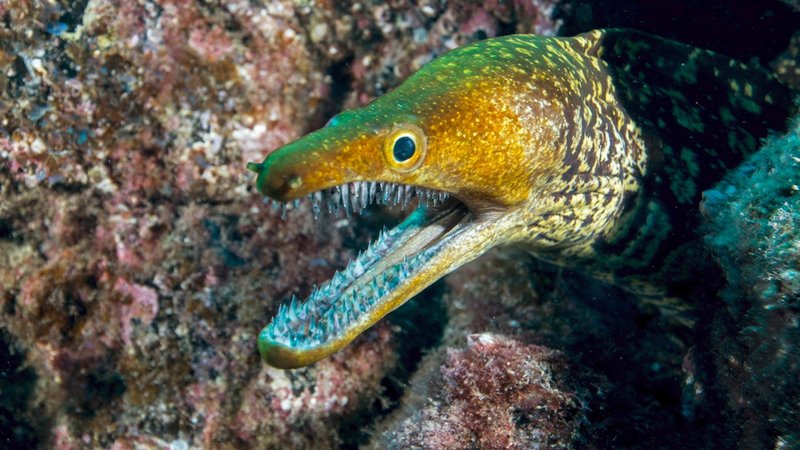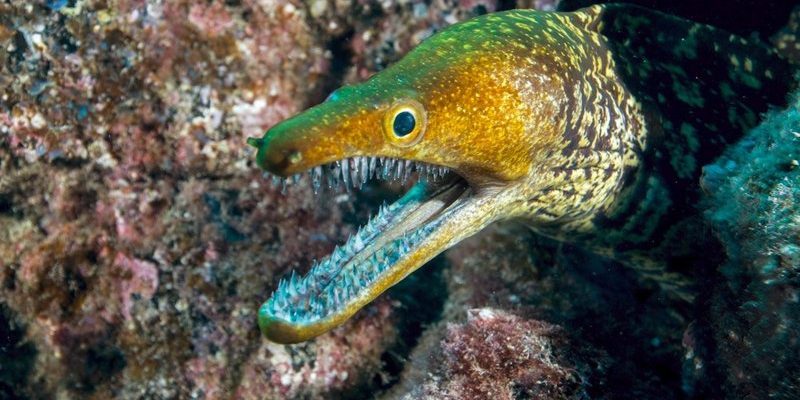
Moray eels are not just misunderstood creatures; they are steeped in cultural significance from different regions of the world. This article dives into the myths and beliefs about these enigmatic eels, exploring how they fit into local lore and what truths lie beneath the surface. So, grab a cup of coffee, and let’s unravel the mysteries of the moray eel together—it’s a journey worth taking.
What Are Moray Eels?
Before we get into the myths, it’s good to know a bit about the moray eel itself. Moray eels belong to the family Muraenidae and are mostly found in warm and temperate waters. They are known for their long, snake-like bodies, which can reach impressive lengths of up to 13 feet, depending on the species. These creatures are often seen peeking out from rock crevices or coral formations, giving them a somewhat eerie but captivating appearance.
Moray eels have a unique way of hunting. They tend to be nocturnal predators that rely on their keen sense of smell to locate prey, which usually consists of fish and crustaceans. A fun fact is that they have two sets of jaws; the second set works like a pair of hands, allowing them to pull prey into their throat. Pretty wild, right? This hunting technique is both fascinating and unsettling, and it’s also one reason why many myths have formed around them.
Myth 1: Moray Eels Are Aggressive
One of the most common myths is that moray eels are aggressive and will attack anyone who ventures too close. While it’s true that moray eels can be territorial, they are generally not aggressive unless provoked. Think of them as the introverts of the ocean world; they prefer their own space and will often hide away rather than confront intruders.
Most moray eel encounters with humans happen while scuba diving or snorkeling. If you approach them calmly and respectfully, they might just peek out curiously. However, waving your arms around or attempting to touch them can provoke a defensive reaction. Here’s the thing: they’re more interested in avoiding humans than attacking them.
Myth 2: Moray Eels Are Venomous
Another widespread belief is that moray eels are venomous. While some species have sharp teeth and could give a nasty bite if threatened, they actually lack venom. This myth may have sprung from their fierce appearance and predatory nature.
You might be surprised to learn that, when handled carefully, moray eels can be quite docile. Of course, it’s always best to appreciate them from a safe distance. Just think of them as the misunderstood tough guys of the reef—more bark than bite.
Cultural Beliefs: The Moray Eel in Folklore
Moray eels play significant roles in various cultural beliefs and folklore around the world. For instance, in some Pacific Island cultures, the moray eel is seen as a guardian spirit. Fishermen often offer food or prayers to these eels, hoping for a bountiful catch in return. This belief stems from the idea that the moray eel protects the waters, ensuring that fish remain plentiful.
In contrast, in ancient Egyptian culture, moray eels were sometimes associated with the goddess Hathor, who represented joy, beauty, and motherhood. They were revered for their beauty and considered sacred. This connection highlights how diverse cultural interpretations of the moray eel can be. How fascinating that a creature can represent both protection and beauty in different cultures!
Myth 3: Moray Eels Will Bite If You Touch Them
Many people believe that simply touching a moray eel will result in a painful bite. While it’s true that these eels can bite if they feel threatened—just like any wild animal—this isn’t a guarantee. Moray eels are not looking to bite humans; they’re more focused on survival in their underwater world.
Still, touching them isn’t a good idea. Not only could you provoke a defensive response, but you also risk introducing bacteria or parasites into their delicate ecosystem. Think of the moray eel as an ocean pet; you wouldn’t want to disturb it in its home, right?
Myth 4: Moray Eels Are Dangerous to Humans
There’s a general fear that moray eels are dangerous, especially when it comes to swimming or diving in areas where they live. While they do have sharp teeth, most eels are more interested in minding their own business than attacking divers or swimmers. The truth is, accidents do happen, but they are often the result of human behavior rather than the eel’s intent.
For instance, anglers might find themselves biting off more than they can chew if they try to catch a moray eel without proper gear. It’s all about respect. As long as you give them space and observe from a distance, moray eels are unlikely to present any danger. They’re like the wild cats of the coral reef—beautiful yet best admired from afar.
Moray eels are truly fascinating creatures, rich with myths and cultural significance. From misunderstood aggressors to revered guardians, these eels have captured human imagination across the globe. By learning more about them, we can dispel the myths and appreciate their unique place in the underwater world.
The next time you encounter a moray eel—whether in a documentary or on a dive—remember to appreciate its beauty and respect its space. Knowledge is power, and understanding these enigmatic eels can help us all coexist with the wonders of nature a little better. So, here’s to the moray eel, a creature that teaches us not just about the oceans but about the stories we tell ourselves too.

